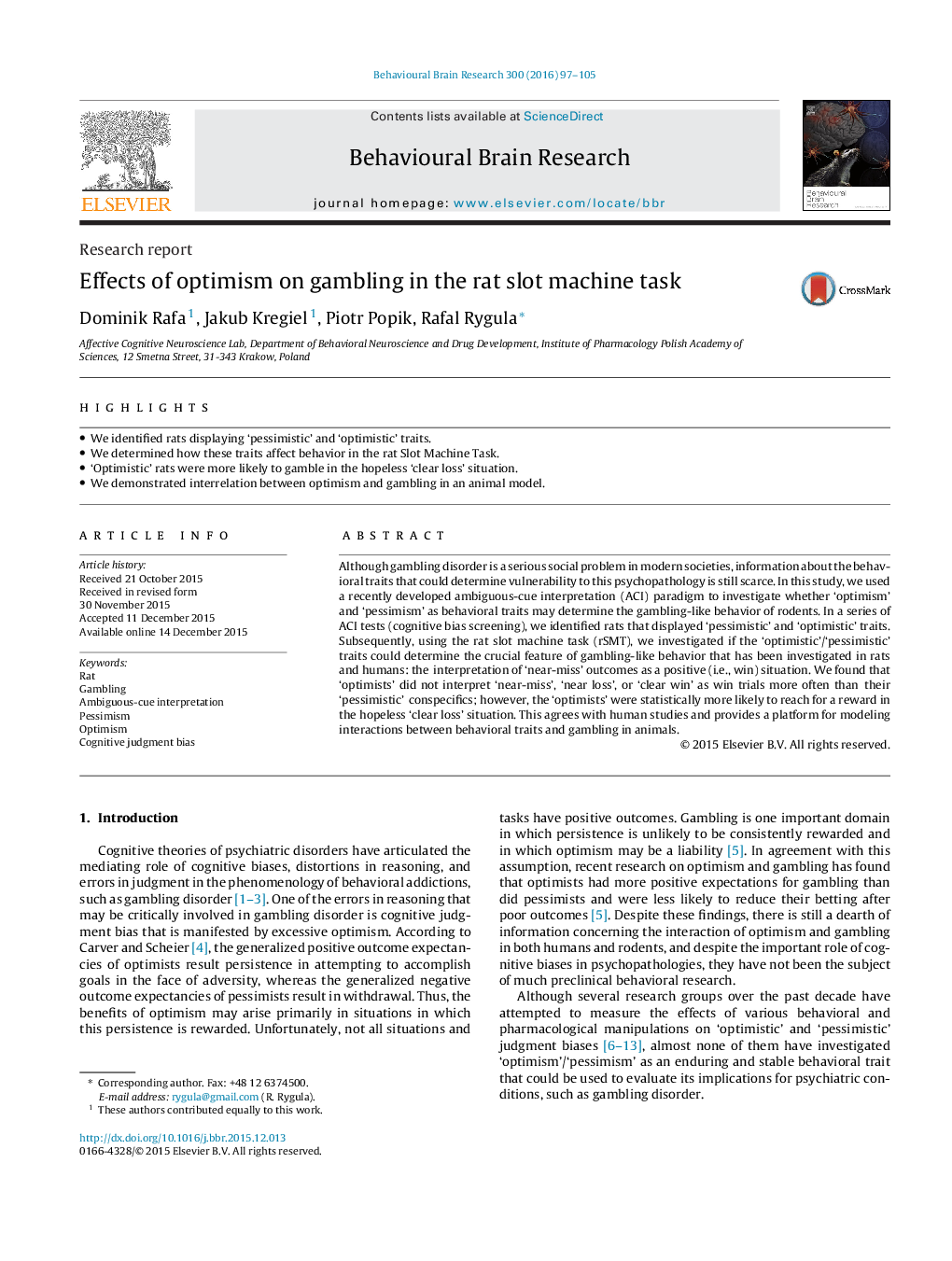| کد مقاله | کد نشریه | سال انتشار | مقاله انگلیسی | نسخه تمام متن |
|---|---|---|---|---|
| 4312204 | 1612933 | 2016 | 9 صفحه PDF | دانلود رایگان |
• We identified rats displaying ‘pessimistic’ and ‘optimistic’ traits.
• We determined how these traits affect behavior in the rat Slot Machine Task.
• ‘Optimistic’ rats were more likely to gamble in the hopeless ‘clear loss’ situation.
• We demonstrated interrelation between optimism and gambling in an animal model.
Although gambling disorder is a serious social problem in modern societies, information about the behavioral traits that could determine vulnerability to this psychopathology is still scarce. In this study, we used a recently developed ambiguous-cue interpretation (ACI) paradigm to investigate whether ‘optimism’ and ‘pessimism’ as behavioral traits may determine the gambling-like behavior of rodents. In a series of ACI tests (cognitive bias screening), we identified rats that displayed ‘pessimistic’ and ‘optimistic’ traits. Subsequently, using the rat slot machine task (rSMT), we investigated if the ‘optimistic’/‘pessimistic’ traits could determine the crucial feature of gambling-like behavior that has been investigated in rats and humans: the interpretation of ‘near-miss’ outcomes as a positive (i.e., win) situation. We found that ‘optimists’ did not interpret ‘near-miss’, ‘near loss’, or ‘clear win’ as win trials more often than their ‘pessimistic’ conspecifics; however, the ‘optimists’ were statistically more likely to reach for a reward in the hopeless ‘clear loss’ situation. This agrees with human studies and provides a platform for modeling interactions between behavioral traits and gambling in animals.
Journal: Behavioural Brain Research - Volume 300, 1 March 2016, Pages 97–105
